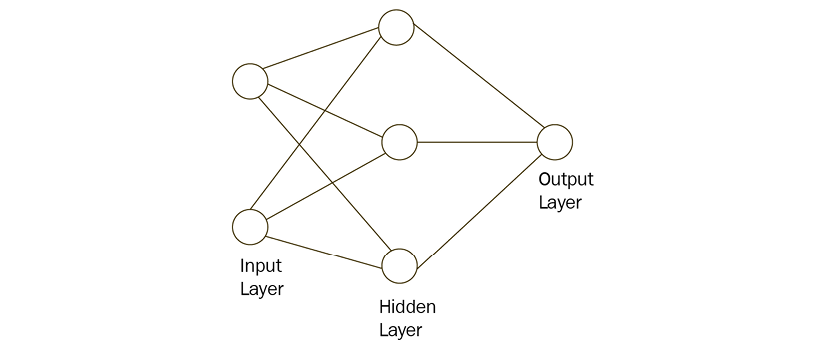ANN and its layers
While neurons are really cool, we cannot just use a single neuron to perform complex tasks. This is the reason our brain has billions of neurons, stacked in layers, forming a network. Similarly, artificial neurons are arranged in layers. Each and every layer will be connected in such a way that information is passed from one layer to another.
A typical ANN consists of the following layers:
- Input layer
- Hidden layer
- Output layer
Each layer has a collection of neurons, and the neurons in one layer interact with all the neurons in the other layers. However, neurons in the same layer will not interact with one another. This is simply because neurons from the adjacent layers have connections or edges between them; however, neurons in the same layer do not have any connections. We use the term nodes or units to represent the neurons in the ANN.
Figure 7.3 shows a typical ANN:

Figure 7.3: ANN
Input layer
The...



